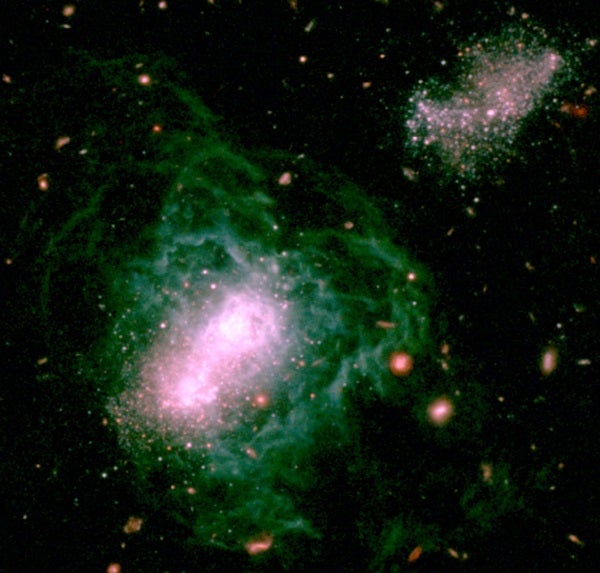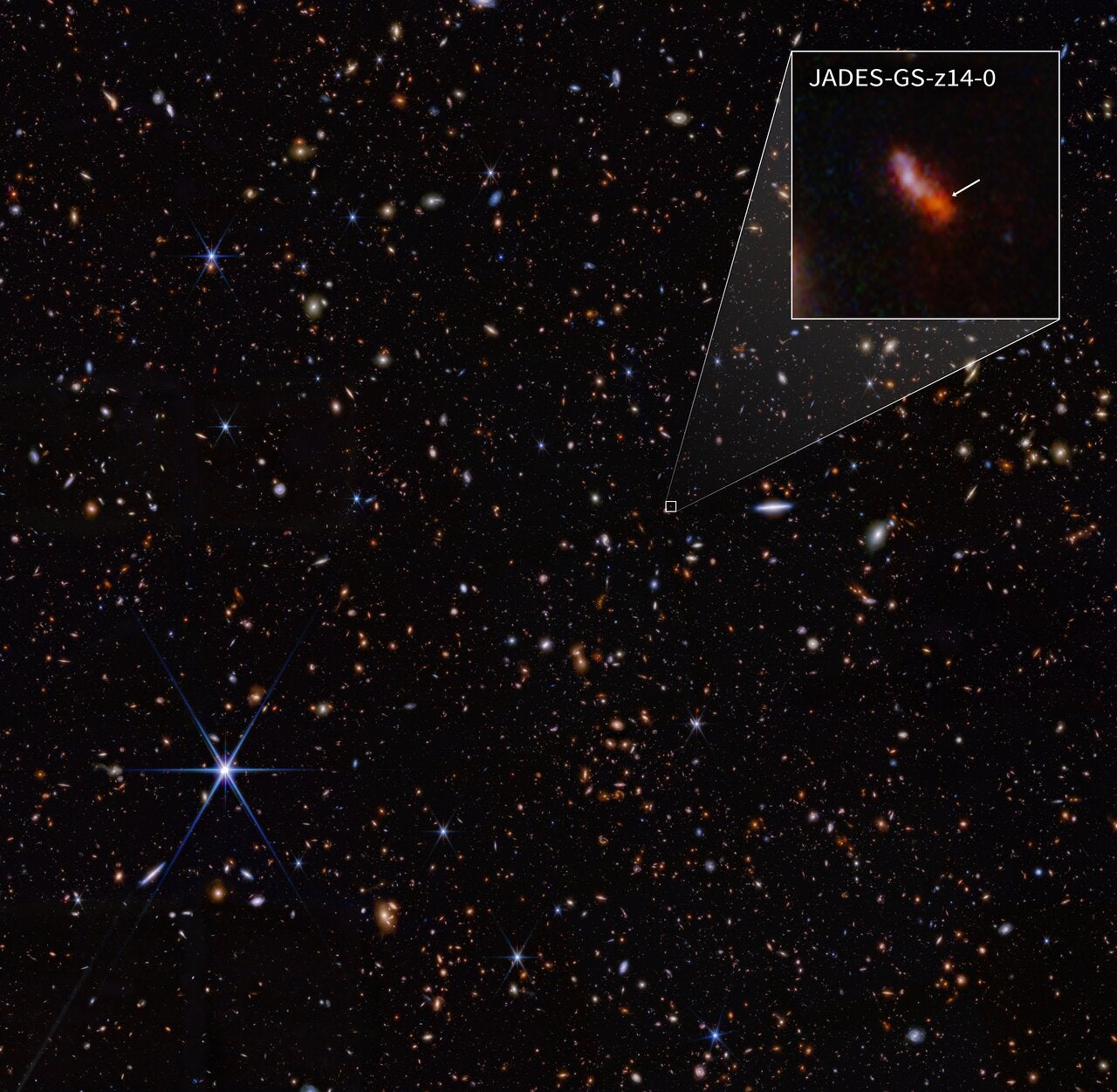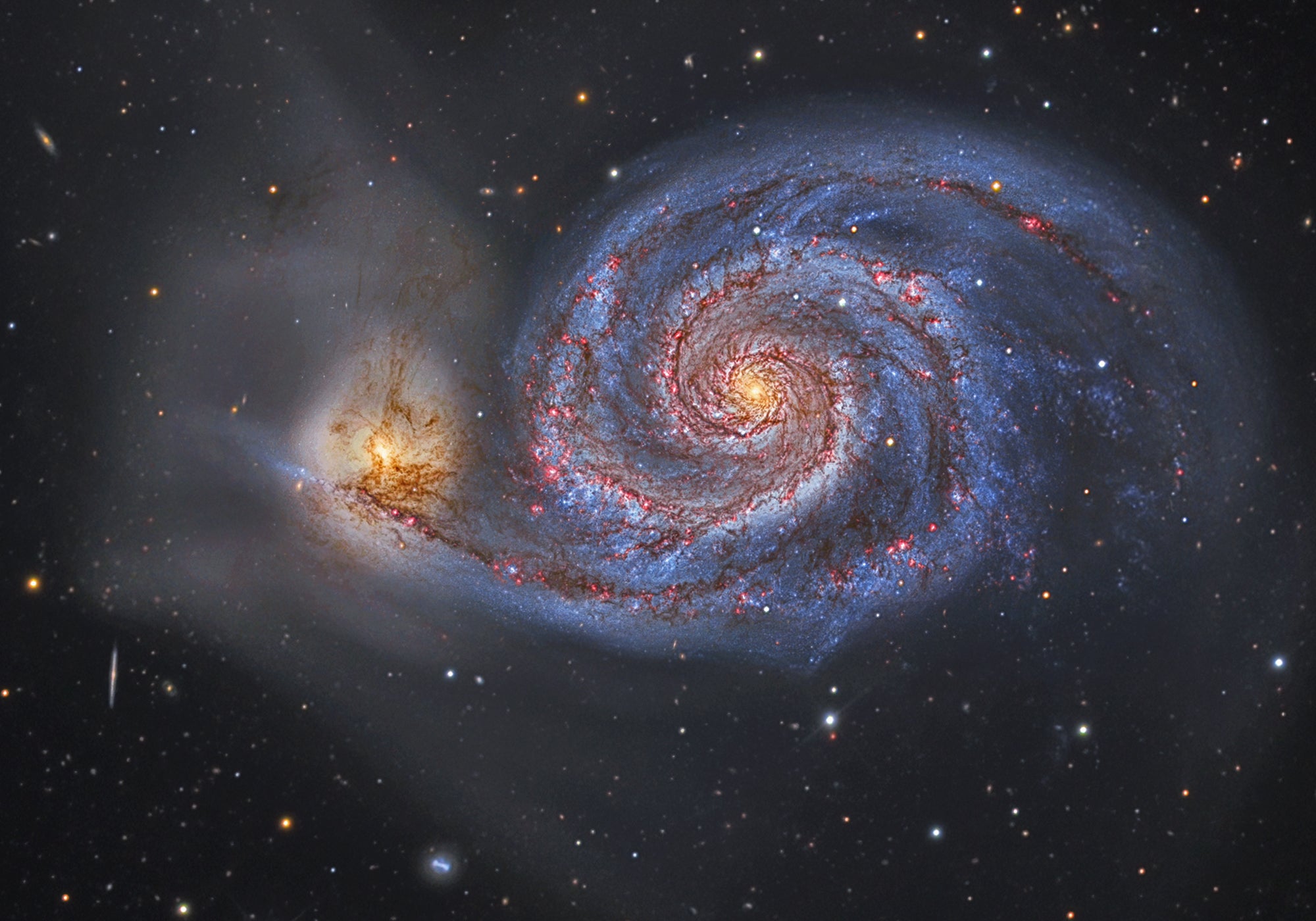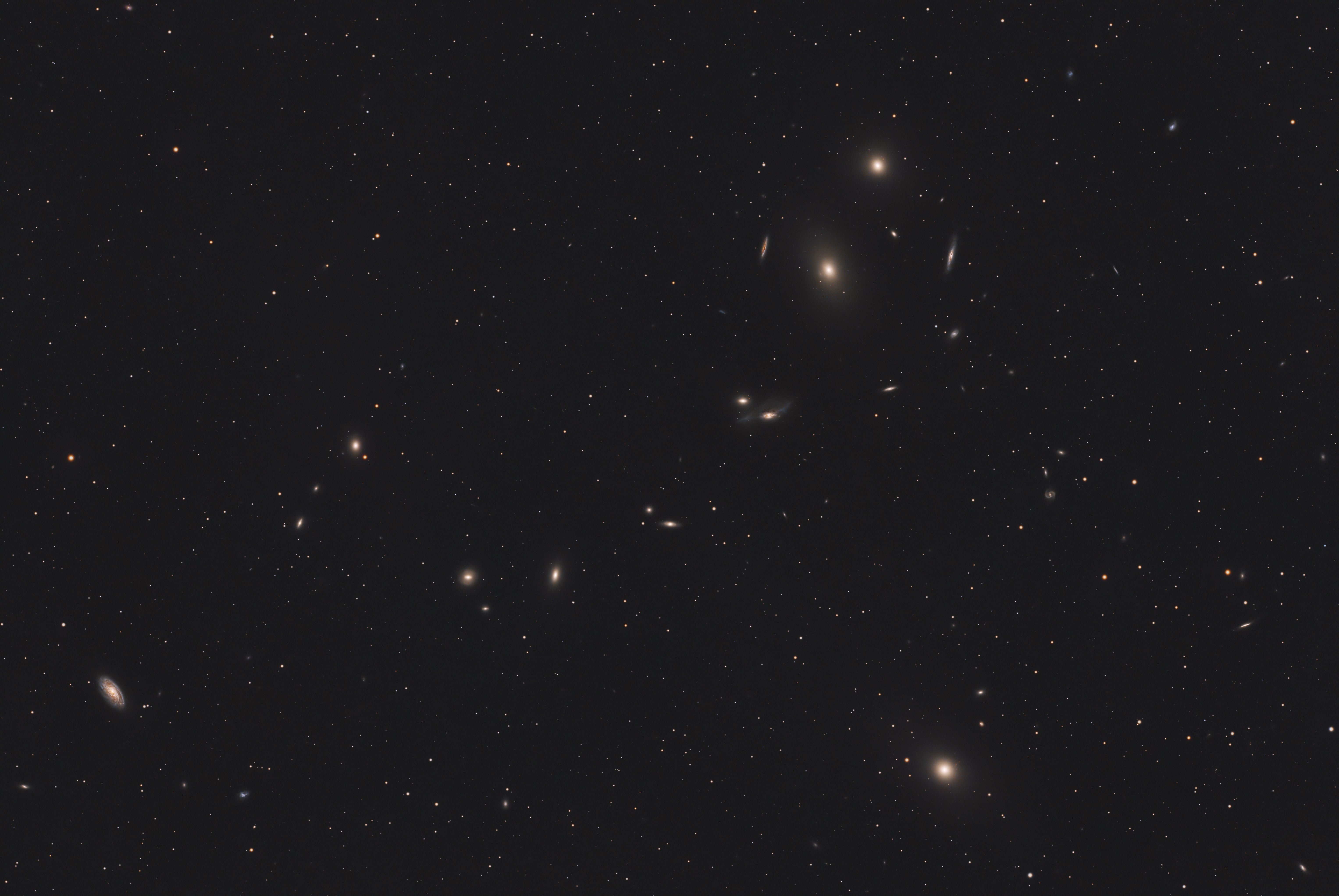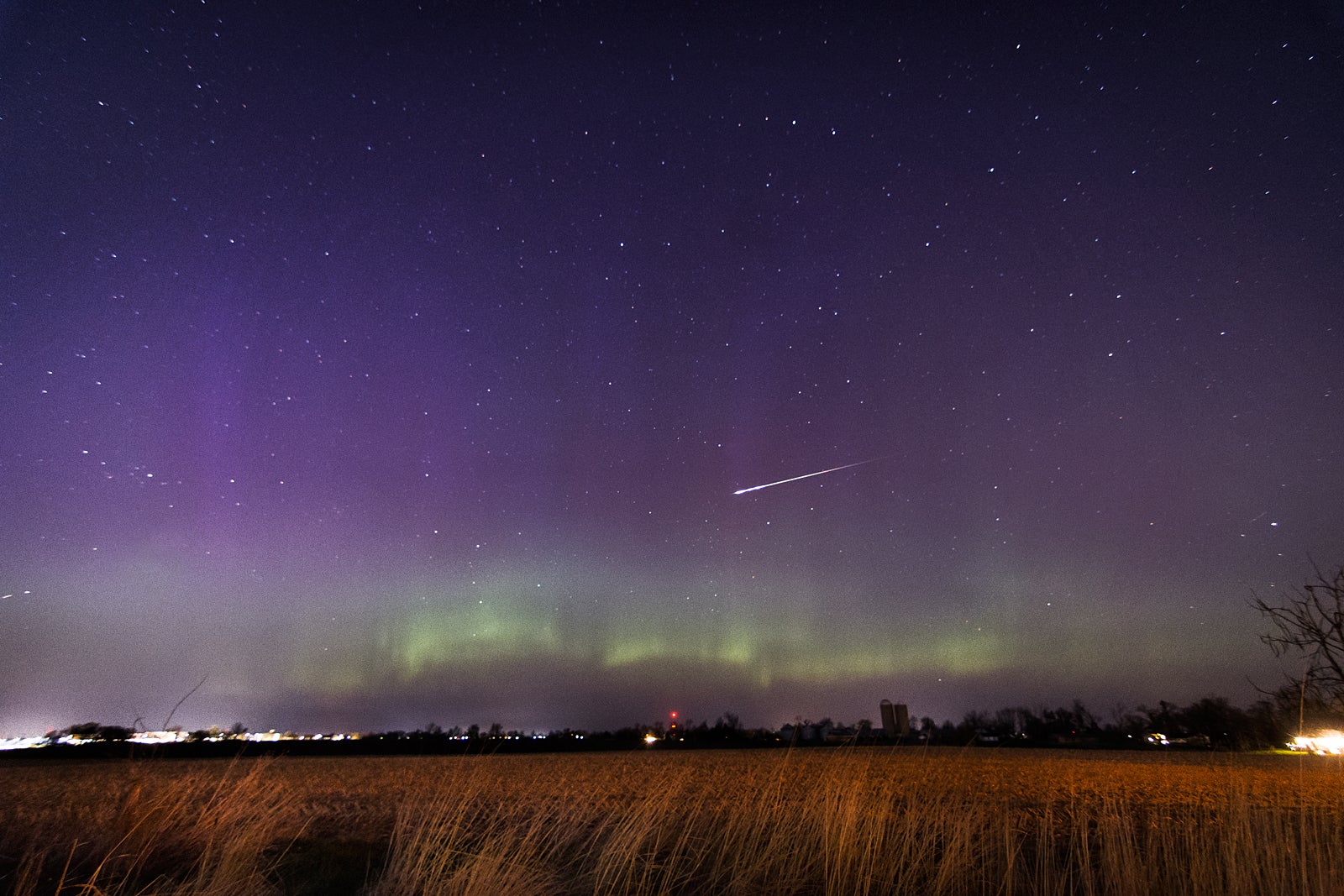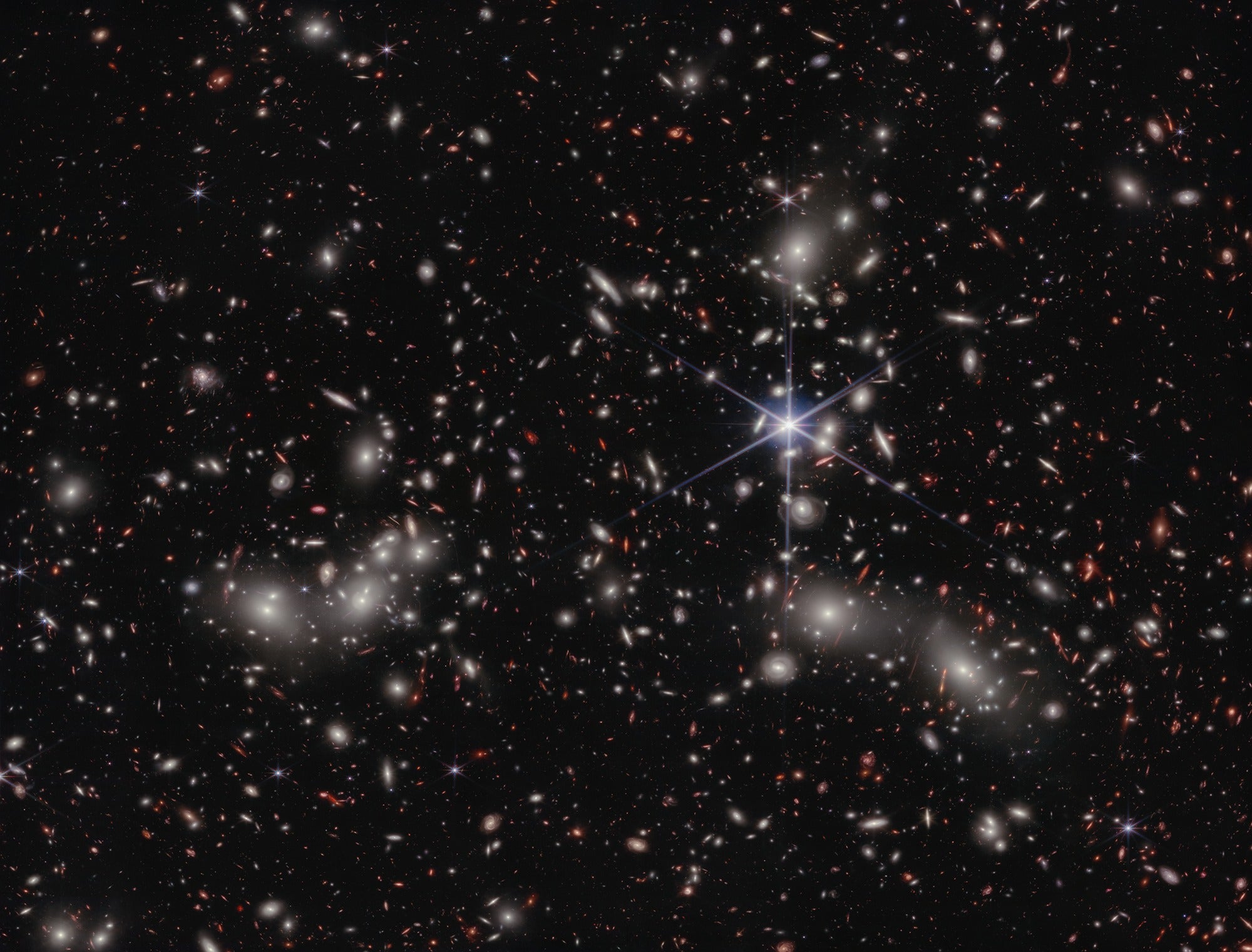I Zw 18 is one of the most studied dwarf galaxies because, among those that have strong star-forming activity, it’s one of the poorest in heavy elements. Its proximity to Earth, combined with a total exposure time of nearly three days, gave researchers data of I Zw 18 with unprecedented resolution and sensitivity.
Analysis of these data revealed an extended gas halo surrounding this galaxy, which is 16 times larger than the stellar component of the galaxy. This halo is the result of huge amounts of energy generated by the starburst this galaxy is going through. This energy heats and disturbs I Zw 18’s cold gas, which ends up emitting an amount of light comparable to what’s being emitted by the stellar component. This emission is designated nebular emission.
“This is ground-breaking work because it provides the first observational proof that, in the early universe, young galaxies that underwent starbursts must have been surrounded by a huge halo of nebular emission,” said Papaderos. “This extended nebular halo results from the cumulative energetic output from thousands of massive stars exploding as supernovae shortly after their formation.”
So far, in distant galaxies where it’s not possible to reach resolutions high enough to distinguish between nebular and star emission, scientists assumed that the gas occupied the same region as the stars, and stars were responsible for emitting most of the light.
This study shows that galaxies undergoing starbursts, similar to I Zw 18, might not obey this rule. This result might lead to substantial corrections in a lot of the work being developed in cosmology and extragalactic astronomy. An example is the estimate of star mass in a galaxy, which astronomers calculate from the galaxy’s total luminosity. But, as these results show, up to 50 percent of that luminosity might originate in nebular, and not star, emission.
Another result from this research shows that, according to Papaderos, “the distribution of nebular emission might be misinterpreted as a stellar disk. These galaxies, still in early stages of formation, might thus be wrongly classified as fully formed galaxies” — such as spirals or ellipticals — a classification mistake that might have happened in many past studies to determine galaxy evolution in the early universe.
These results are also of importance for our understanding of galaxy formation, because the team concluded that I Zw 18 is extremely young, with most stars younger than 1 billion years. So, this galaxy is currently undergoing the dominant phase of its formation, much like the ones formed shortly after the Big Bang.

